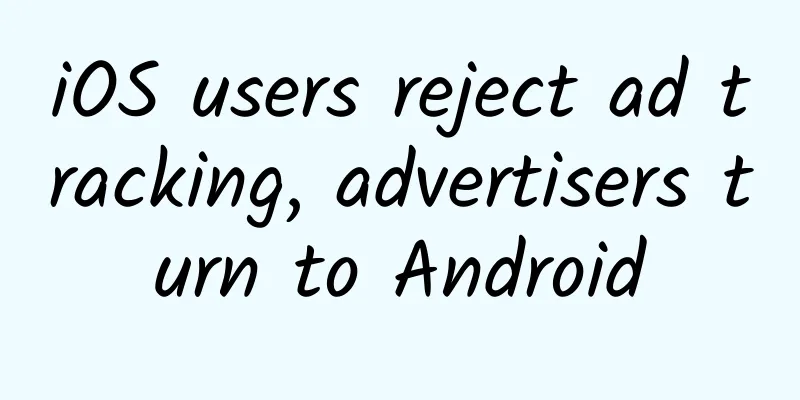iOS users reject ad tracking, advertisers turn to Android

|
App Tracking Transparency (ATT) is a new feature introduced in iOS 14.5 that allows users to refuse ad tracking across apps and the web. This controversial feature disables IDFA, one of the most widely used tracking identifiers. The Post-IDFA Alliance collected advertising data from its member companies to compare how the market changed before and after the launch of the app anti-tracking feature. The alliance members include Liftoff, AdColony, Fyber, ChartBoost, InMobi, Vunger, and Single. The survey showed that these companies increased their ad spending on Android from 8.3% to 21%. At the same time, their ad spending on iOS generally decreased, but the decline was smaller, only about 3%. Vungle was the only company that increased spending on both platforms, increasing its spending on Android and iOS by 21% and 3.3%, respectively. The company said that this spending change is just an experiment as it looks at trends in the industry. Overall, the end result of these shifts from iOS to Android could be an increase in overall ad spending across the industry. In the two weeks following the release of iOS 14.5, the Post-IDFA Alliance said user adoption rates ranged from 11.5% to 14.92%, calling this a "low adoption rate relative to past iOS updates." As the market grows, the ad industry will gain more insight into the true impact of this update. According to AdColony data, about 36.5% of users who updated to iOS 14.5 chose to accept tracking. However, Single, a member of the Post-IDFA Alliance, said that only 16.8% of users chose to accept ad tracking, about 18.9% of users completely turned off "Allow apps to request tracking" in the settings, and 64.28% of users refused tracking. Adoption rates given by each member of the Post-IDFA Alliance varied, but ranged from a high of 36.5% to a low of 16.8%, with neither figure representing a worst-case scenario for the industry. At the same time, the cost of ad impressions on iOS 14.5 has also decreased, with the cost per thousand impressions (CPM) falling by 2.4% (Liftoff) to 8.73% (AdColony). Advertising industry leaders expect an initial decline, but this may only be temporary. The Post-IDFA Alliance predicts that as more users adopt iOS 14.5 and marketers have more confidence in ad performance, CPMs will steadily increase over time. |
Recommend
WeChat was deleted without knowing it: This app is recommended for you to clear invalid friends with one click
A few days ago, I wanted to send a group message,...
An analysis of the operation of a maternal and infant APP product activity
This month we planned a WeChat fan-raising activi...
Fan Deng Reading User Growth System!
Fan Deng’s annual revenue from reading books has ...
What does Chinese people’s homesickness look like?
↑A group of National Geographic fans, focusing on...
How does the Douyin beauty blogger account operate?
With the popularity of short videos, a group of b...
The first course of the iP Evolution Wealth Camp of Tanhuo Video Account
The first issue of Tanhuo’s video account iP Evol...
How to plan a live e-commerce event?
Live streaming began to explode in 2015, sparking...
Tao Ge's "Love Map" improves love thinking and chat skills
Training course content: The course covers the at...
Tibetan wild donkey: I can run and dig, I am the “water-seeking expert” on the plateau!
(This issue’s pictures are from Photo Network) On...
Being sick is not necessarily a bad thing! Frequently getting these diseases may help you stay healthy and live longer
"Doctor, doctor, please take a look at our c...
Feeling overheated physically? Remember to cool down your mind, too.
It's been so hot lately that air conditioners...
How to fully plan a screen-sweeping event?
“Behind every successful case, there is a methodo...
Android turns 10: What's left of the original OS?
[[244605]] The first commercial version of Androi...
The cold wave is jumping around, the temperature in Hunan has dropped by 20 degrees while the temperature in Beijing and Tianjin has risen. What is the cold air doing?
Cooling is relative. The amount of cooling caused...
Xiaomi's Lei Jun plays with chip giants in the palm of his hand?
Yesterday, a piece of news about Xiaomi and Media...









